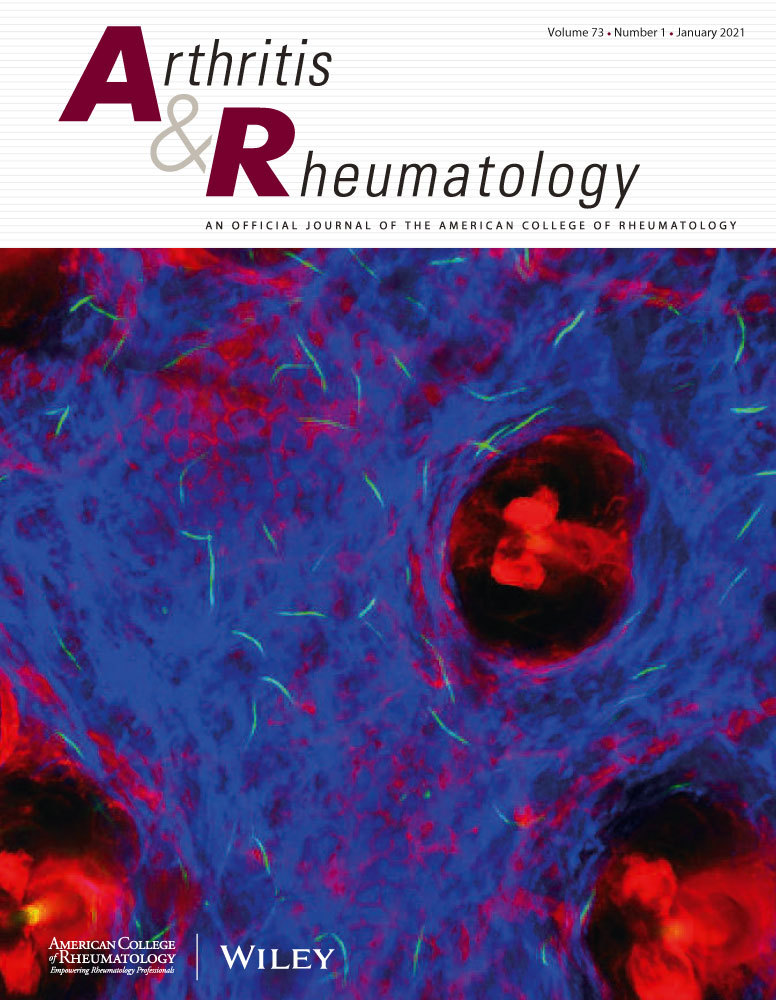中国儿童狼疮患者的三重奏全外显子组测序揭示了新的候选基因。
IF 11.4
1区 医学
Q1 RHEUMATOLOGY
引用次数: 0
摘要
目的:系统性红斑狼疮(SLE)是一种罕见和常见的基因变异导致的自身免疫性疾病。儿童中严重的散发性疾病通常可以用“从头”变异来解释,这种变异可以通过三人测序发现。方法对50例中国儿童期SLE (cSLE)患者进行全外显子组测序。研究了slel相关基因的罕见编码变异和所有新生变异。基因通路和表达分析以及干扰素-β荧光素酶测定用于预测疾病的贡献。结果每个先证者至少携带一种sled相关基因的罕见变异,平均每名儿童携带6种。至少有两个先证患有单基因疾病,三分之一携带新的或罕见的变异基因,这些基因被公认为导致单基因SLE: ACP5、C3、C4A、C4B、DNASE1、IFIH1、NRAS、RNASEH2B、RNASEH2C和SAMHD1。先证者携带的中位数是一个全新的、罕见的编码变异。有趣的是,尽管先前与SLE相关的基因中只有2个新生变异,但50个基因中有12个富集于前20个SLE相关通路中,并在ABC/浆B细胞中高度表达。这些基因代表了有希望的狼疮候选基因。在先前与SLE或自身免疫无关的基因DHX8和ACTR5中发生的两种新变异增强了I型IFN信号传导。结论本研究强调了狼疮相关罕见基因变异在cSLE中的丰度,支持了新生变异对疾病的频繁贡献,并确定了可能构成与中国患者相关的新治疗靶点的基因。本文章由计算机程序翻译,如有差异,请以英文原文为准。
Trio whole exome sequencing in Chinese childhood-onset lupus reveals novel candidate genes.
OBJECTIVES
Systemic lupus erythematosus (SLE) is an autoimmune disease in which rare and common gene variants contribute to pathogenesis. Severe sporadic disease in children is often explained by 'de novo' variants that can be uncovered by trio sequencing.
METHODS
Whole exome sequencing was performed in 50 Chinese trios with childhood-onset SLE (cSLE). Rare coding variants in SLE-associated genes and all de novo variants were investigated. Gene pathway and expression analysis, and interferon-β luciferase assays were used to predict contribution to disease.
RESULTS
Each proband carried at least one rare variant in an SLE-associated gene with a median of six per child. At least two probands had monogenic disease and one third carried novel or rare variants in genes well accepted to cause monogenic SLE: ACP5, C3, C4A, C4B, DNASE1, IFIH1, NRAS, RNASEH2B, RNASEH2C and SAMHD1. Probands carried a median of one de novo, rare, coding variant. Intriguingly, although only 2 de novo variants occurred in genes previously associated with SLE, 12 of the 50 genes were enriched in the top 20 SLE-related pathways and were highly expressed in ABC/plasma B cells. These genes represent promising candidate lupus genes. Two de novo variants occurring in genes not previously linked to SLE or autoimmunity, DHX8 and ACTR5, enhanced type I IFN signaling.
CONCLUSIONS
This study highlights the abundance of lupus-relevant rare gene variants in cSLE, supports frequent contribution of de novo variants to disease, and identifies genes that may constitute novel therapeutic targets of relevance to Chinese patients.
求助全文
通过发布文献求助,成功后即可免费获取论文全文。
去求助
来源期刊

Arthritis & Rheumatology
RHEUMATOLOGY-
CiteScore
20.90
自引率
3.00%
发文量
371
期刊介绍:
Arthritis & Rheumatology is the official journal of the American College of Rheumatology and focuses on the natural history, pathophysiology, treatment, and outcome of rheumatic diseases. It is a peer-reviewed publication that aims to provide the highest quality basic and clinical research in this field. The journal covers a wide range of investigative areas and also includes review articles, editorials, and educational material for researchers and clinicians. Being recognized as a leading research journal in rheumatology, Arthritis & Rheumatology serves the global community of rheumatology investigators and clinicians.
 求助内容:
求助内容: 应助结果提醒方式:
应助结果提醒方式:


